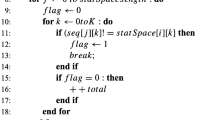Abstract
Computer systems are now powerful enough to run multiple virtual machines (VMs), each one running a separate operating system (OS) instance. In such an environment, direct and centralized energy management employed by a single OS is unfeasible. Accurately predicting the idle intervals is one of the major approaches to save energy of disk drives. However, for the intensive workloads, it is difficult to find long idle intervals. Even if long idle intervals exist, it is very difficult for a predictor to catch the idle spikes in the workloads. This paper proposes to divide the workloads into buckets which are equal in time length, and predict the number of the forthcoming requests in each bucket instead of the length of the idle periods. By doing so, the bucket method makes the converted workload more predictable. The method also squeezes the executing time of each request to the end of its respective bucket, thus extending the idle length. By deliberately reshaping the workloads such that the crests and troughs of each workload become aligned, we can aggregate the peaks and the idle periods of the workloads. Due to the extended idle length caused by this aggregation, energy can be conserved. Furthermore, as a result of aligning the peaks, resource utilization is improved when the system is active. A trace driven simulator is designed to evaluate the idea. Three traces are employed to represent the workloads issued by three web servers residing in three VMs. The experimental results show that our method can save significant amounts of energy by sacrificing a small amount of quality of service.
Similar content being viewed by others
References
Barham P, Dragovic B et al (2003) Xen and the art of virtualization. In: Proceedings of the 19th SOSP, pp 164–177
Barroso L, Hölzle U (2007) The case for energy-proportional computing. Computer 40(12): 33–37
Benini L, Bogliolo A, Micheli G (2000) A survey of design techniques for system-level dynamic power management. IEEE Trans VLSI Syst 8(3): 299–316
Bisson T, Brandt S, Long D (2007) A hybrid disk-aware spin-down algorithm with I/O subsystem support. In: Proceedings of IEEE IPCCC 2007, pp 236–245
Bucy JS, Ganger GR (2003) The DiskSim simulation environment version 3.0 reference manual. Technical report CMU-CS-03-102
Carrera E, Pinheiro E, Bianchini R (2003) Conserving disk energy in network servers. In: Proceedings of the 17th ICS’03, pp 86–97
Deng Y (2009) Exploiting the performance gains of modern disk drives by enhancing data locality. Inf Sci 179(14): 2494–2511
Deng Y, Wang F, Helian N (2008) EED: energy efficient disk drive architecture. Inf Sci 178(22): 4403–4417
Fraser K, Hand S, Neugebauer R, Pratt I, Warfield A, Williamson M (2004) Safe hardware access with the Xen virtual machine monitor. In: Proceedings of the 1st Workshop on OASIS
Gniady C, Butt A, Hu Y, Lu Y (2006) Program counter-based prediction techniques for dynamic energy management. IEEE Trans Comput 55(6): 641–658
Haldar V, Probst C, Venkatachalam V, Franz M (2003) Virtual-machine driven dynamic voltage scaling. Technical report CS-03-21, University of California
Hoxmeier J, DiCesare C (2000) System response time and user satisfaction: an experimental study of browser-based applications. In: Proceedings of AMCIS
Hsu W, Smith A (2003) Characteristics of I/O traffic in personal computer and server workloads. IBM Syst J 42(2): 347–372
Hwang C, Wu A (2000) A predictive system shutdown method for energy saving of event-driven computation. ACM TODAES 5(2): 226–241
IDC China 2008 Predictions (2008) China2008 Top 10 information and communication technology predictions
Internet Traffic Traces (2009) http://ita.ee.lbl.gov/html/traces.html
Liu J, Huang W, Abali B, Panda D (2006) High performance VMM-bypass I/O in virtual machines. In: Proceedings of the annual conference on USENIX ’06 annual technical conference
Nathuji R, Schwan K (2007) VirtualPower: coordinated power management in virtualized enterprise systems. In: Proceedings of 21st SOSP, pp 265–278
Rotem E, Naveh A, Moffie M, Mendelson A (2004) Analysis of thermal monitor features of the Intel Pentium M processor. In: Workshop on temperature aware computer systems
SPEC-Power and Performance. http://www.spec.org/power_ssj2008/
Stoess J, Lang C, Reinhardt M (2006) Energy-aware processor management for virtual machines. In: Poster of 1st ACM EuroSys 2006
Stoess J, Lang C, Bellosa F (2007) Energy management for hypervisor-based virtual machines. In: Proceedings of USENIX’07
Waldspurger C (2002) Memory resource management in VMware ESX server. In: Proceedings of the 5th OSDI
Zhang F, Chanson S (2004) Blocking-aware processor voltage scheduling for real-time tasks. ACM TECS 3(2): 307–335
Author information
Authors and Affiliations
Corresponding author
Additional information
Communicated by C.H. Cap.
Rights and permissions
About this article
Cite this article
Deng, Y., Pung, B. Conserving disk energy in virtual machine based environments by amplifying bursts. Computing 91, 3–21 (2011). https://doi.org/10.1007/s00607-010-0083-2
Received:
Accepted:
Published:
Issue Date:
DOI: https://doi.org/10.1007/s00607-010-0083-2




